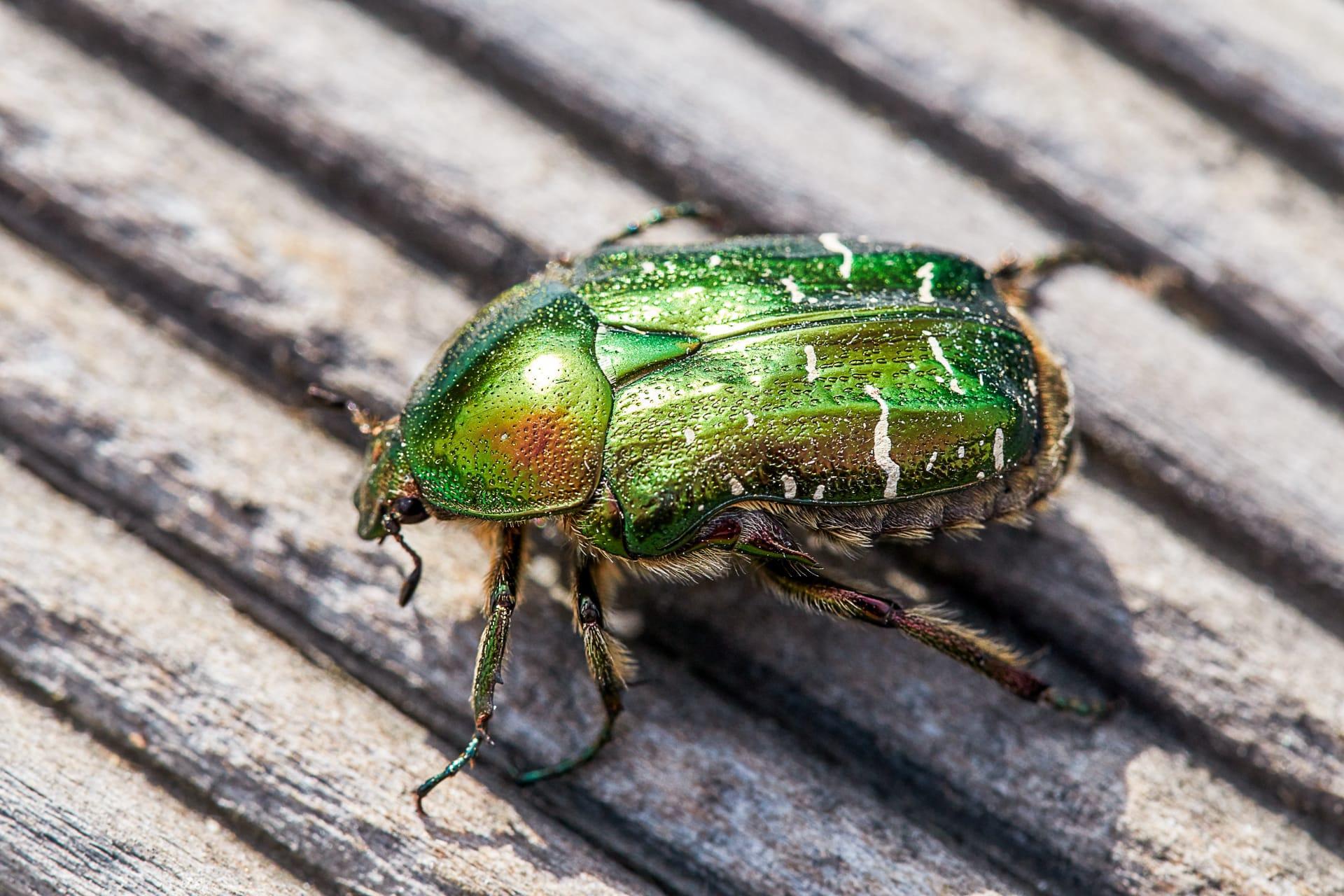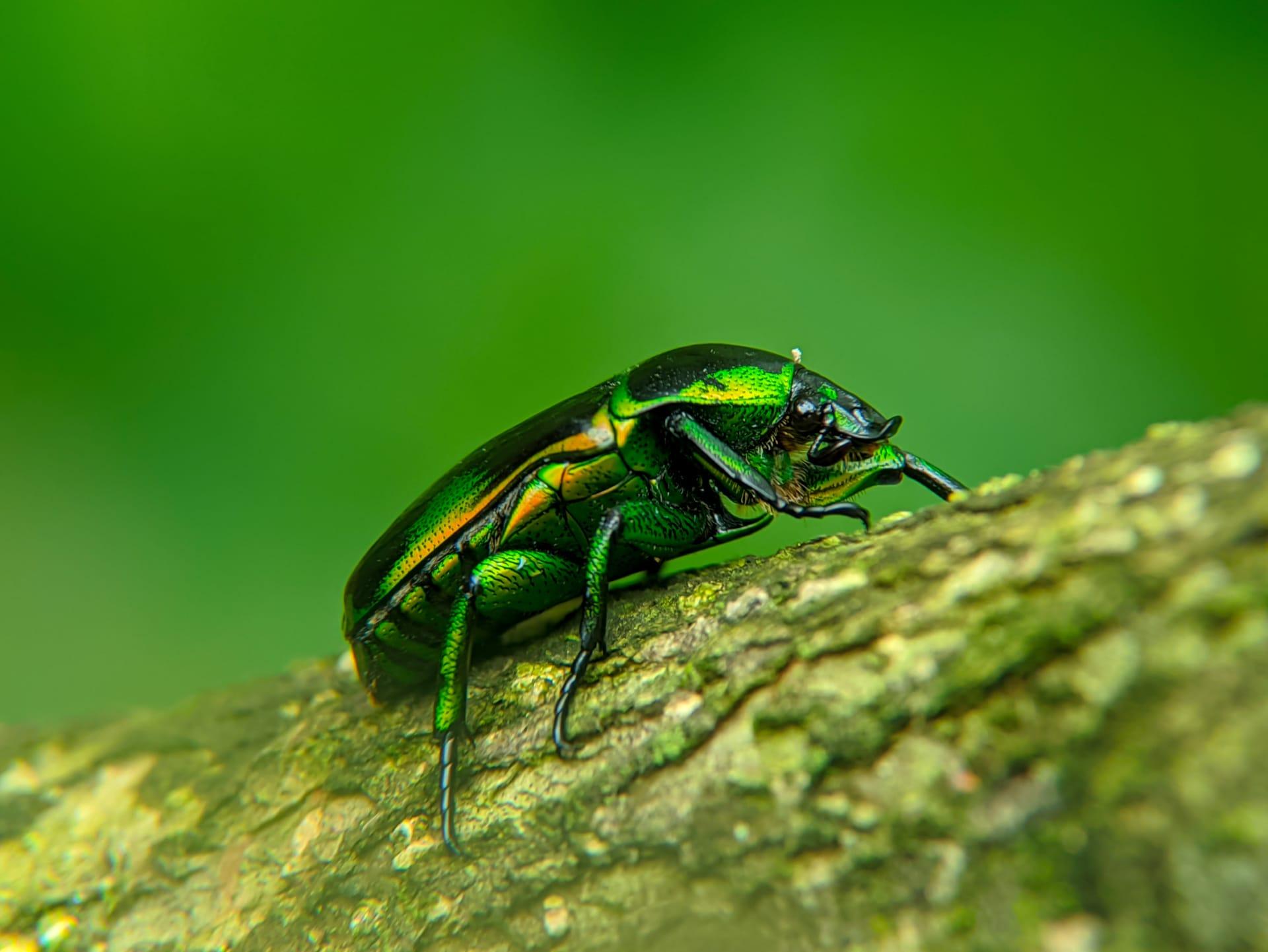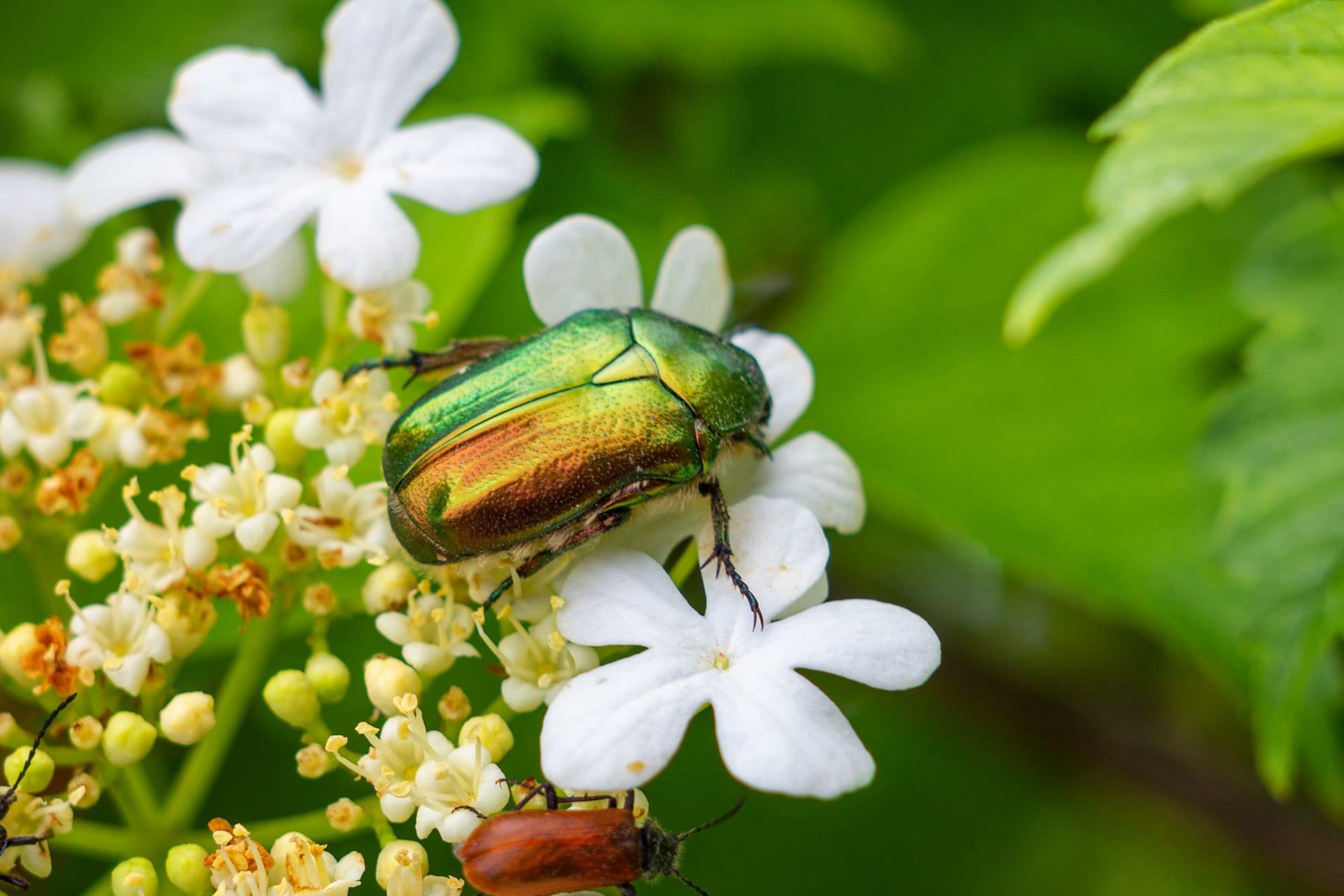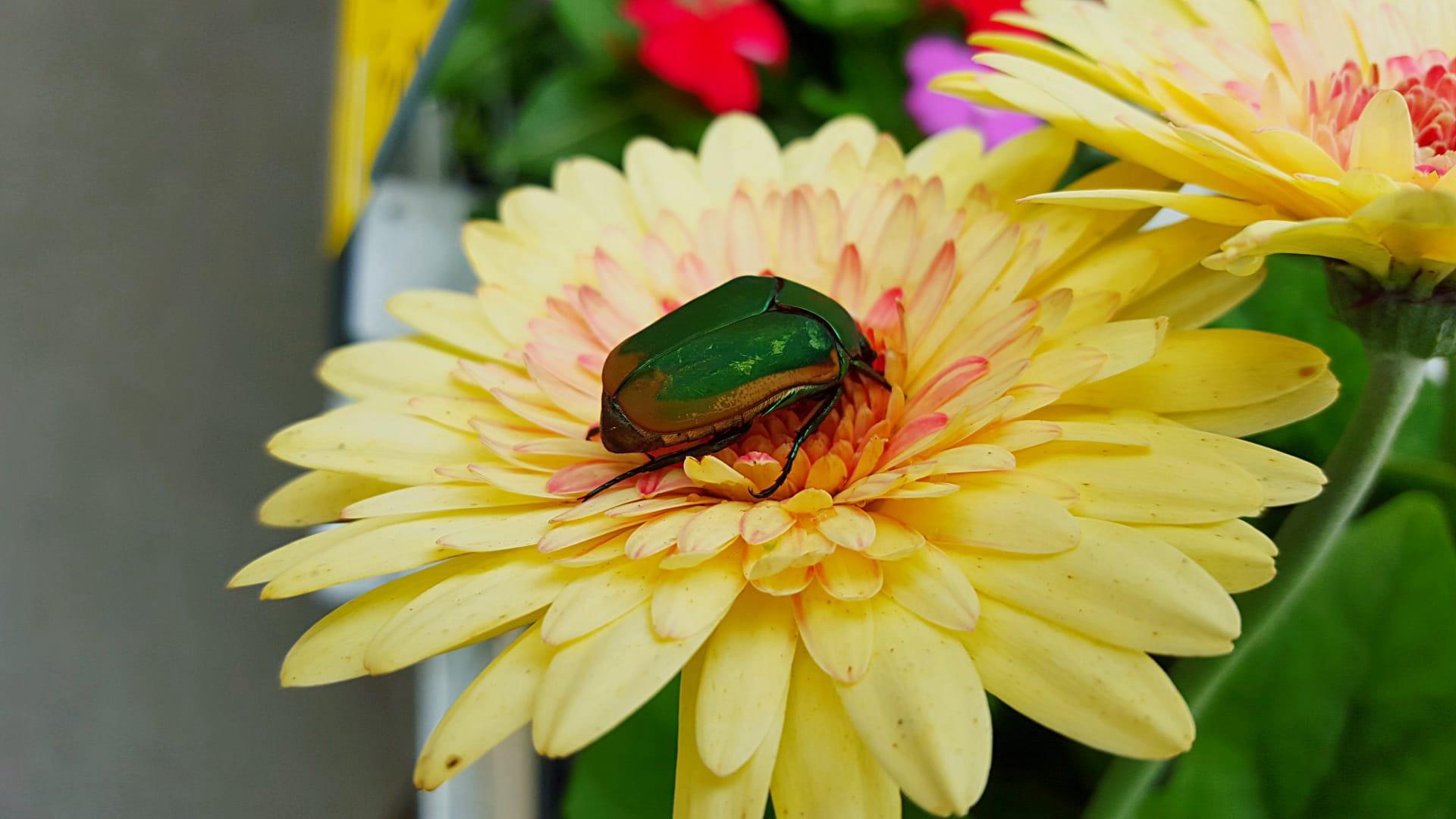Green June Beetle Trivia
- Home /
- Trivia Question /
- Animal /
- Green June Beetle Trivia
1
Question: What distinguishes the Green June Beetle from other beetle species in terms of appearance?
Answer: The Green June Beetle (Cotinis nitida), primarily found in the eastern U.S., is known for its distinctive, metallic green color with occasional gold or coppery reflections. It measures about 0.8 to 1 inch (20 to 25 millimeters) in length. Unlike many other beetles, its underwings are a brilliant iridescent green, visible when in flight.
Question: How does the life cycle of the Green June Beetle progress, and how long does it typically last?
Answer: The life cycle of the Green June Beetle encompasses four stages: egg, larva (grub), pupa, and adult. The entire cycle spans approximately one year. Eggs are laid in mid-summer and hatch into grubs, which overwinter underground. In spring, they pupate and emerge as adults by early summer, completing the cycle.

2
Question: Is it true that Green June Beetles are harmful to lawns and gardens?
Answer: Yes, it's true. The larvae, or grubs, of the Green June Beetle can be harmful to lawns and gardens. They feed on roots and organic matter in the soil, causing damage to grass and ornamental plants. However, the adult beetles primarily feed on fruits and are less harmful to vegetation.
Question: Do Green June Beetles bite or sting humans?
Answer: Contrary to some beliefs, Green June Beetles do not bite or sting humans. They might buzz around loudly and can be intimidating due to their size and flight pattern, but they pose no direct harm to people.

3
Question: What is the primary diet of the Green June Beetle and how does it impact its environment?
Answer: Adult Green June Beetles primarily feed on ripe fruits like peaches, apples, and berries. They can cause significant damage to fruit crops. Larvae feed on decomposing organic matter in soil, aiding in nutrient cycling but potentially damaging turf and garden plants.
Question: How do Green June Beetles navigate and find their food sources?
Answer: Green June Beetles are attracted to ripe, fermenting fruits through their keen sense of smell. They are adept fliers and can travel considerable distances in search of food. The larvae use sensory organs to detect decaying organic matter in the soil, which is their primary food source.

4
Question: Can Green June Beetles be beneficial for the ecosystem, despite being pests?
Answer: Yes, in certain ways. While the larvae can damage lawns and gardens, they also contribute to the decomposition of organic matter, enhancing soil fertility. The adults help pollinate flowers when they feed on their nectar and pollen.
Question: Are Green June Beetles solitary or do they exhibit any social behaviors?
Answer: Green June Beetles are generally solitary insects. However, they can often be found in groups, especially when feeding on fruit or mating. They do not build nests or colonies like bees or ants, but large numbers can congregate in areas with abundant food sources.

5
Question: What natural predators do Green June Beetles have, and how do these affect their population?
Answer: Green June Beetles have several natural predators including birds, moles, skunks, and rodents. These predators help control the beetle population by feeding on the grubs and, to a lesser extent, the adults. Parasitic wasps also target the larvae, further regulating their numbers.
Question: How do weather conditions impact the Green June Beetle population?
Answer: Weather conditions greatly influence the Green June Beetle's life cycle and population. Wet springs are favorable for larval development, leading to higher populations. Conversely, dry conditions can reduce their numbers as it becomes difficult for larvae to survive in the soil. Temperature fluctuations also affect their emergence and breeding cycles.